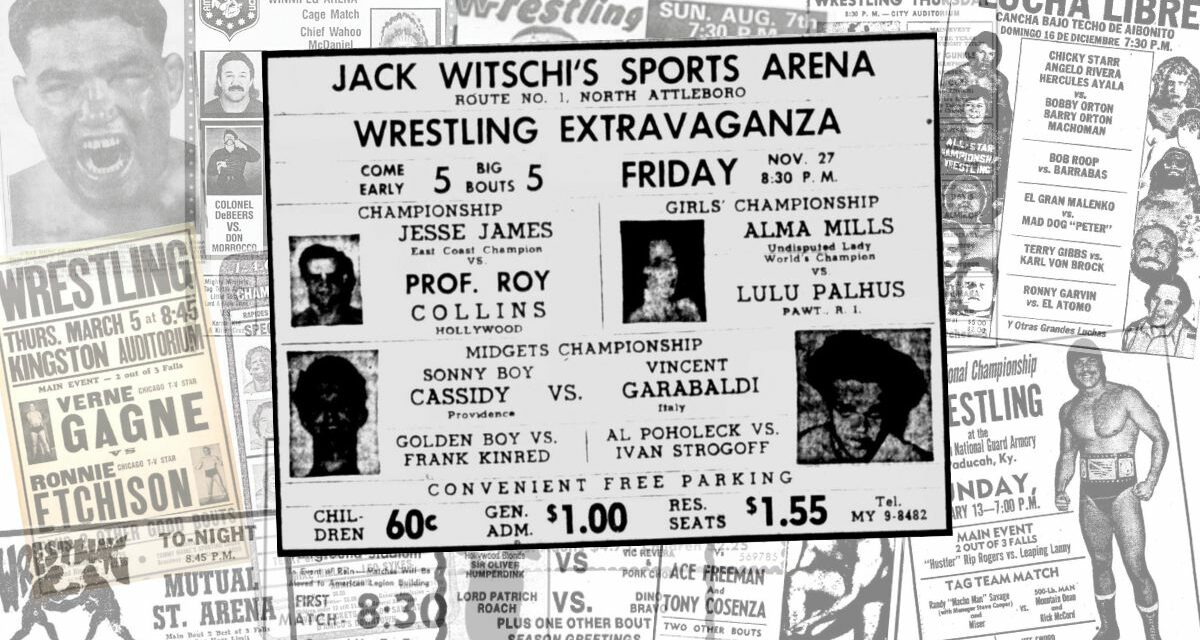I have long been fascinated by the life and times of Jack Pfefer, one of the most notorious figures in professional wrestling history.
When SlamWrestling.net asked me to try my hand at digging deep into an old wrestling card, I was struggling to come up with something readers would love, so I decided to stick to one within my area of investigation. So without further delay, here’s my card choice for the evening, a 1959 Black Friday Blowout at Jack Witschi’s Sports Arena in North Attleboro, Massachusetts:
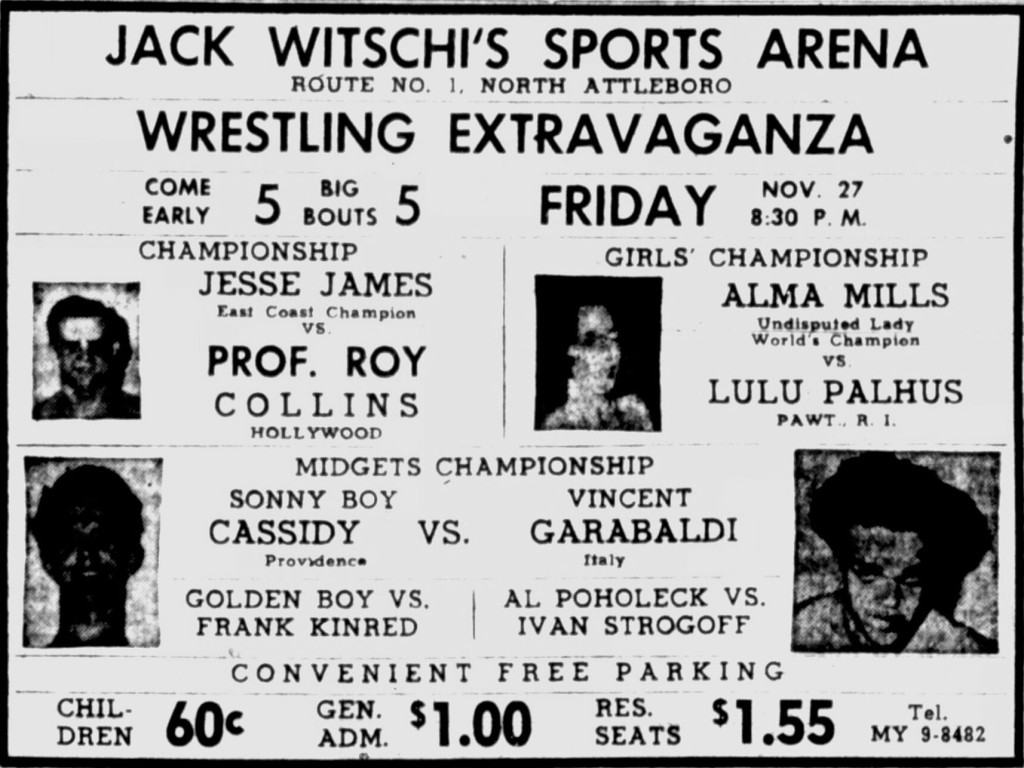
A card from November 27, 1959.
For many, the first question after seeing the card I’ve picked is likely, “Why the hell did he pick that?” Don’t worry, it’s an understandable thought to have — after all, for many, this is just a random card full of unknown wrestlers from a small town in the middle of nowhere. The only thing it seems to have going for it is that it hits the critical Thanksgiving topic prompt so many editors are clamoring for at this time of year.
However, this card encapsulates everything I love about wrestling, history, and how I fell in love with both. This event was a Tony Santos card from Jack Witschi’s Sports Arena, a rundown deathtrap of a venue that would give the Dallas Sportatorium a run for its money.
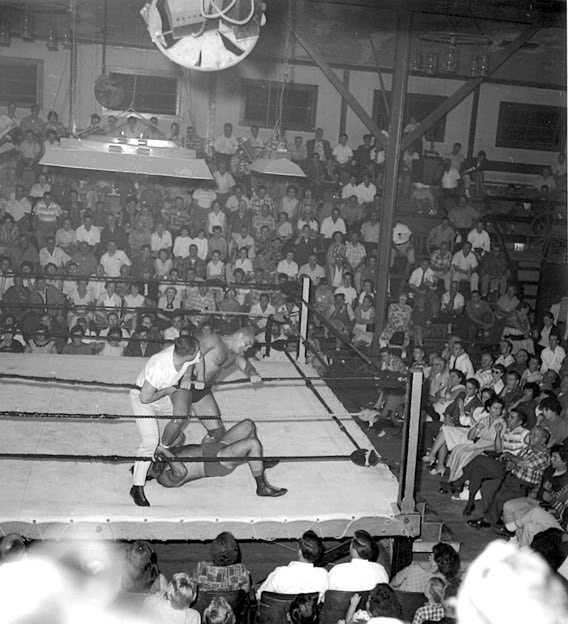
Jack Witschi’s Sports Arena
Likely, the modest arena, located close to the Rhode Island border in North Attleboro, Massachusetts, is unfamiliar to many. But it was a mainstay in the New England wrestling scene for almost 50 years, with everyone from Bruno Sammartino to, well, Jack Pfefer’s Bruno SanMartino, appearing during that time.
Jack Witschi’s Sports Arena holds a special place in my heart. I grew up in Cumberland, Rhode Island, not far from the site of the historic venue that hosted everything from wrestling and boxing to dance marathons and concerts. My father proudly talks about his trips to Witschi’s in the 1970s, replete with the usual vintage wrestling tropes of maniacal heels, unruly old women, and riotous brawls.
And while the venue has long since disappeared (destroyed in a fire in 1979), countless pieces have been written throughout the years in memory of a piece of New England sporting history, such as this one from the Sun Chronicle: 30 years later, Witschi’s still stirs memories.
By 1959, Witschi’s was a regular stop for promoter Tony Santos, who operated several steady towns in New England and spot shows at local fairs and beachside resorts. I was going to include some additional background information on his promotion. Still, there isn’t much to say beyond this blunt assessment of the area by Pat Patterson in his autobiography, Accepted: “All we ever did was wrestle in small buildings around Boston for no real money.”
One name that immediately jumps off the page of this advertisement is Alma Mills. Mills was Santos’ biggest female star and played a behind-the-scenes role as an instructor at his Boston wrestling school. Ms. Mills was also a popular subject with the local press, thanks in no small part to her varied interests. When not in the ring, she operated a barber shop on Clarendon Street in Boston but also found time for several hobbies, including upholstering, which earned her a write-up in the Boston Globe.
Alma Mills is also known for her matches against Tony Santos’ wrestling bear, Ozzie. Purchased from a trapper in Ontario, Ozzie and Mills proved a popular pairing with seaside tourists on the Cape. The bear was kept in a specially-constructed den at Tony Santos’ home in Medford, Massachusetts.
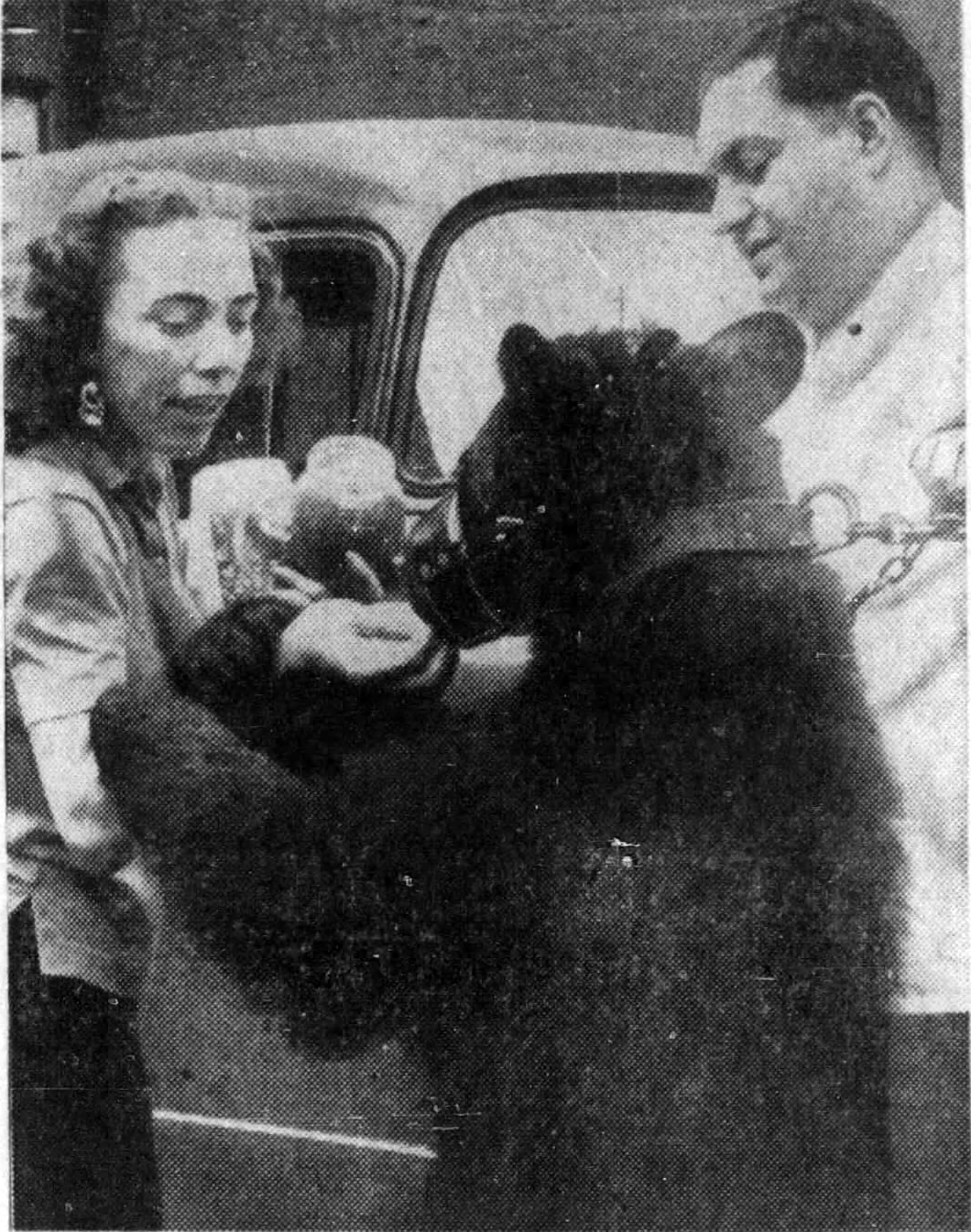
Alma Mills and Black Ozzie.
Mills’ opponent for the evening was local Lucille Paulhus from Pawtucket, Rhode Island. Smaller groups often leaned heavily on local wrestlers to fill out cards, with varying degrees of success. However, Paulhus was fairly successful, headlining a few of Witschi’s cards against Mills during this period. She occasionally used the name Lulu Dupree, a nod to fellow star Golden Boy Dupree, also seen on this card.
Golden Boy Dupree was Emile Dupre, a mainstay of Eddie Quinn’s Montreal promotion and future promoter in the Canadian Atlantic provinces, and father to WWE star Rene Dupre. In a few years, the “Golden Boy” moniker would be usurped by Tony’s son, Gene Sannizzaro, who would find success in Tennessee and the South as Flash Monroe (partner of Rocket Monroe), Gene Dundee, and Luis Firpo. Gene Santos would also introduce wrestling legend Pat Patterson to his long-time partner, Louie Dondero.
Another notable feature of this card is the midget performers, who Santos leaned on almost as heavily as Mills and her female students. Sonny Boy Cassidy was a popular midget attraction, traveling the country for over 30 years. Shortly after his run here, Cassidy would head off to Portland for promoter Don Owen.
Cassidy’s opponent for the evening was Vincent Garibaldi, who would later be billed in the area as Midget World Champion. Garibaldi played many different roles with Santos, which was essential when partnering with someone like Jack Pfefer. Even the midgets would adopt multiple aliases, with the oft-ridiculed Pfefer knock-off names of Hobo Brazil and Bruno SanMartino even being applied to the pint-sized brawlers on occasion, with the diminutive version of the Hobo character seen below in a later Big Time Wrestling ad:
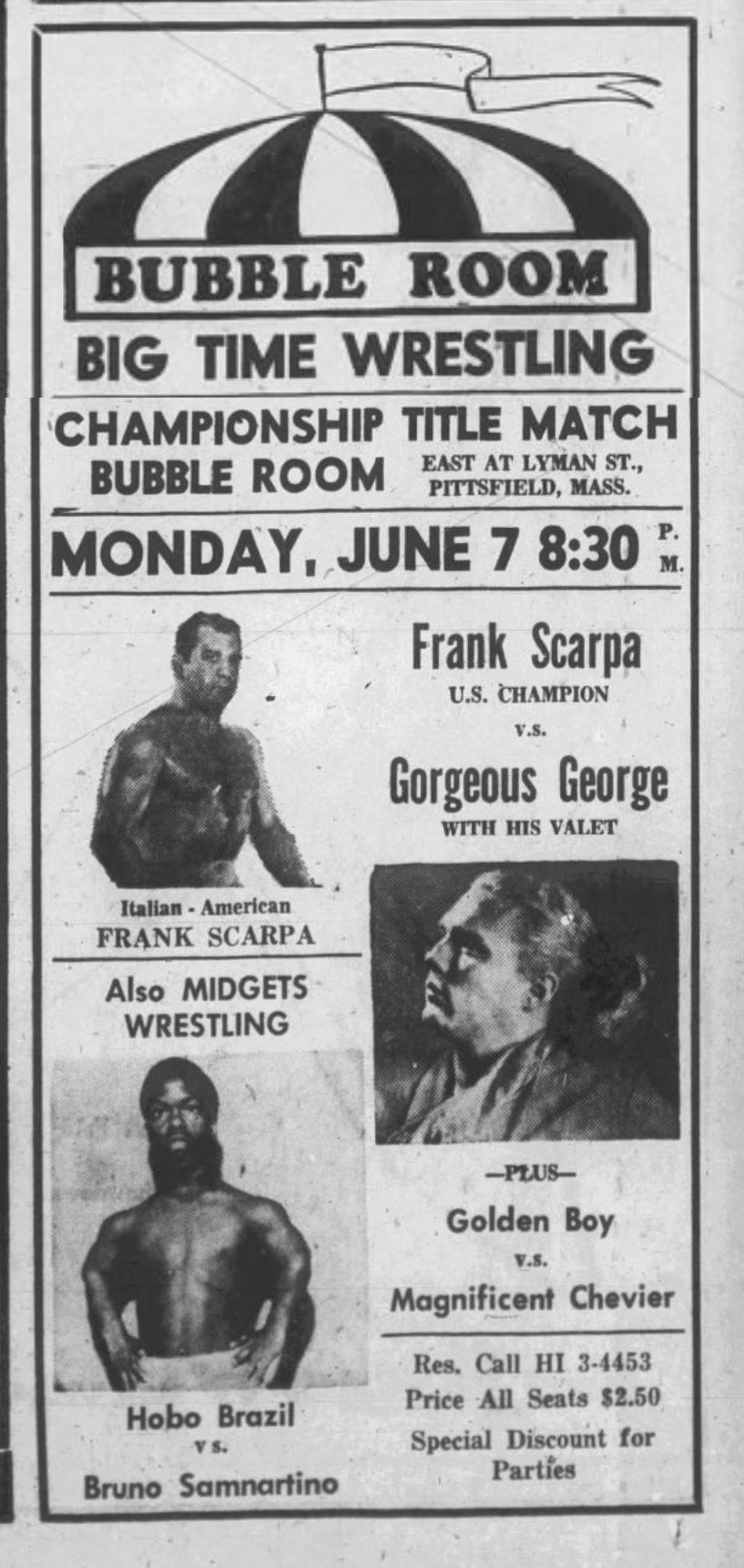
Hobo Brazil, not to be confused with Bobo Brazil.
The other competitors on the card are a mix of Santos locals and Pfefer mainstays, namely East Coast Heavyweight Champion Jesse James and Belgian strongman Ivan Strogoff. The name Prof. Roy Collins may be an early date for Ripper Collins, who would find his greatest fame in Hawaii.
One of the reasons I love digging deep into the background of cards like this is that you can actually see the political dynamics shifting in a mere handful of advertisements.
In 1959, for example, grappling in Boston was on the cusp of a major shift. The next year, 1960, would see the end of Paul Bowser’s time in charge of Boston wrestling, with longtime Pfefer enemy and rival promoter Eddie Quinn bowing out of the city soon after.
For Santos, this paradigm shift would mean the launching of Big Time Wrestling and an extended (and ultimately unsuccessful) war against Abe Ford and the WWWF. For Jack Pfefer, the new decade would bring renewed success, with the Halotosis Kid (as he was known to his enemies) securing power at the Boston Garden with partner Santos.
And if you’d like some more insights on the changing of the guard in Boston, or about Jack Pfefer’s life and career in general, check out my Twitter page.
Happy Thanksgiving everyone!
RELATED LINK
